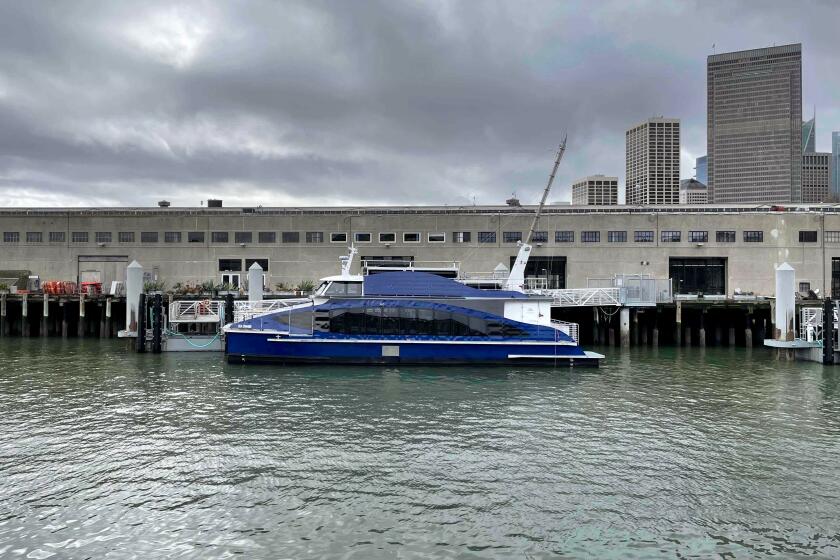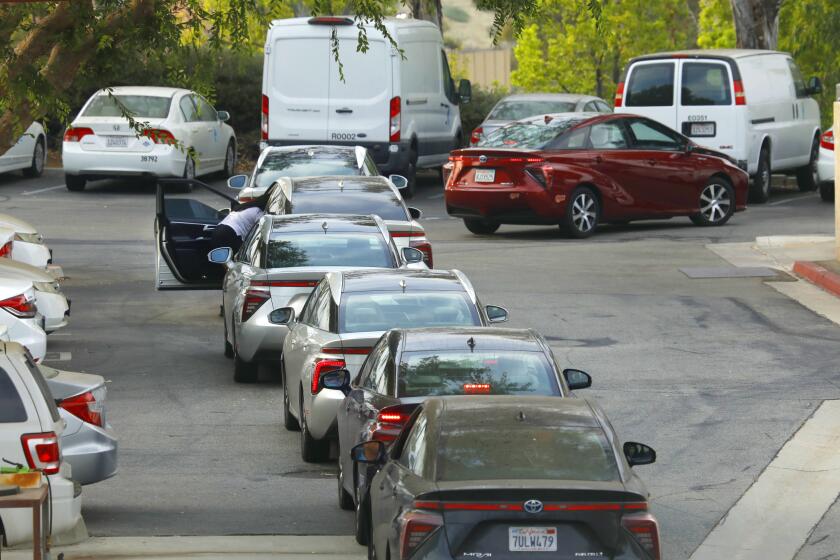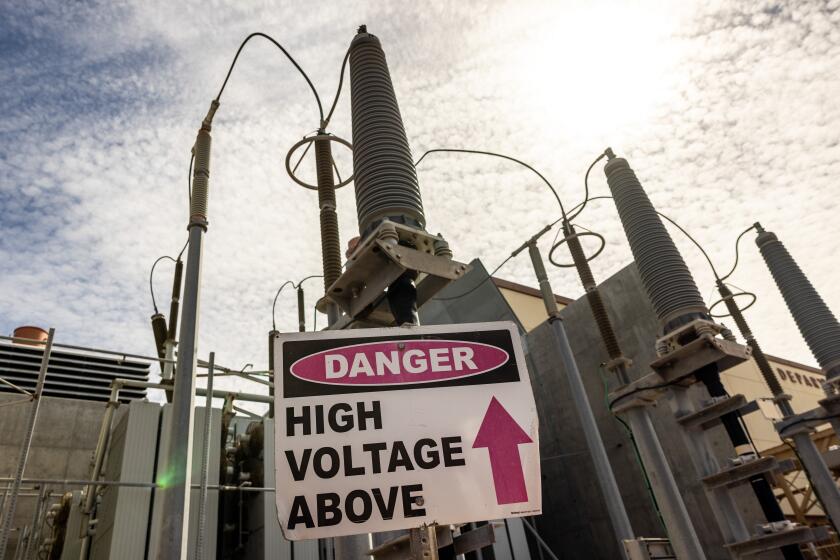
It is a sparkling, sunny August morning in 2043, as your Air China flight from Beijing touches down gracefully (and almost silently) at LAX. The sleek plane is one of a new generation of hydrogen-powered wide-body jets manufactured by Commercial Aircraft Corp. of China — the kind of innovation that helped the state-owned company sail past Boeing and Airbus in the 2030s to become the world’s largest aerospace group.
Starting with the Inflation Reduction Act in 2022, the last two decades have seen massive efforts to clean up transportation all around the United States and throughout the world. Back in the early 2020s, transportation accounted for 29% of America’s greenhouse gas emissions, but that number has been steadily dwindling to almost zero — resulting in cleaner cities everywhere.
Not only have electric and hydrogen-powered vehicles replaced gas-guzzling cars, but many people have forsaken car-ownership altogether, in favor of much more economic and widely available solutions like e-bikes, robo-taxis and public transit.
And here in what was once the world’s greatest car city, this remarkable transition shows. The vast Angeleno landscape, once shrouded in haze and smog, now glistens under the Southern California sun. Mt. Baldy to the north is crisply etched in the distance. The once-notorious traffic jams along the 405, the 5 and the 101 quickly evaporated with the introduction of congestion pricing on the eve of the 2028 Olympic Games — and have never returned.
If the Golden State is going to lead the world toward a better, safer future, our political and business leaders — and the rest of us — will have to work harder to rewrite the California narrative. Here’s how we can push the state forward.
As you step out of the Air China terminal, your always-on ChatGPT-12 assistant Mindy evaluates the choices about which transportation mode — all carbon-free, of course — can take you home to Sherman Oaks in the most efficient and most economic way possible.
Public transit would be the least expensive — it’s been free since 2035, in fact. Thanks to the electric LAX People Mover and new high-speed electric L.A. Metro express trains, the journey would take only 37 minutes, door-to-door.
Another option is the increasingly popular Joby AirTaxi, an eVTOL (electric vertical take-off and landing aircraft) service that can zip you from LAX to the vertiport landing station at the bottom of your road in just 12 minutes — for just $45. In the end, you decide on a 35-minute trip in a driverless TaxiPrime, one of the 37,000 electric robo-taxis that now roam L.A. streets. (TaxiPrime, of course, has become the main revenue generator for Amazon, following its hostile takeover of Uber in the recession of the mid-2030s.)
The San Francisco Bay Ferry vessel is the first commercial maritime boat in the U.S. to be powered by hydrogen fuel cells.
You stretch out in the driverless taxi as it glides onto the 405. Massive solar panels line the median strip, soaking up the sun and channeling that energy into the L.A. Department of Water and Power’s grid. These are complemented by offshore wind farms stretching out from Catalina Island, their blades turning slowly, silently contributing to the energy orchestra. It’s a mesmerizing sight, marrying the ceaseless energy of the city with the quiet power of nature. A quarter-century ago, California led the nation in embracing solar and wind energy to replace hydrocarbons in the production of electricity — now the whole nation has caught up.
The hydrogen economy is also in full swing throughout the city, as it is in many cities around the planet. Hydrogen is the most common element in the universe and widely available simply by splitting water through a process called electrolysis. Since the mid-2020s, when hydrogen production tax credits started to be made available, hydrogen-powered planes, trains and trucks rapidly became an alternative to using big electric batteries for mobility. Everywhere you look these days in Los Angeles you find various sizes and types of electrolyzers. Even many EV chargers are now off-grid, making their own hydrogen to power themselves.
California should invest more money into nurturing the use of hydrogen vehicles, not just pouring funds into plug-in electric cars.
This hydrogen revolution extends beyond private vehicles into the realm of public transit. Sleek, hydrogen-powered L.A. DOT buses slide past you in a dedicated lane. Metro’s huge light-rail system — built out in the 2020s and 2030s to become one of the world’s largest — is now also partially powered by hydrogen fuel cells, small hydrogen-powered electric motors. From Santa Monica to East L.A., these clean trains and buses crisscross the city, knitting together communities in a patchwork of silent and sustainable mobility.
Shipping and freight have also finally embraced the green revolution. The Port of Los Angeles, once a major polluter, is now a hub of clean transport. Massive container ships, powered by clean ammonia, wind, methane and other clean fuels, dock and unload their goods, contributing to the economy without damaging the environment. The tens of thousands of diesel trucks that until the early 2030s clogged the once-smoky Alameda corridor along the 710 Freeway have given way to clean fleets of driverless hydrogen fuel cell-powered trucks, which then fan out across America.
Finally, the robo-taxi turns into your driveway — and you’re home. As the sun sets, painting the San Fernando Valley in hues of pink and gold, you can see the city’s clean energy grid come alive. Solar and wind energy, stored during the day, now power the city’s electric nightlife. Street lights flicker on, powered by clean electricity.
Critics said the $800-million green hydrogen plan could end up making the climate crisis worse, not better.
You realize the city’s transformation goes beyond the physical. The clean air, the silent hum of electric vehicles, the solar panels and wind turbines dotting the landscape, those funny-looking electrolyzers in odd places like convenience stores — these are more than just symbols of technological progress. They’re signs of a city, and a state, that made tough decisions to prioritize its environment over convenience, to put the future ahead of the present, to transform itself for the better.
As you retire for the night — with a small glass of whiskey delivered to you by Alfred, the cheery household cyborg you picked up at a 35% discount off list price on Amazon Prime day in 2041, you reflect on the incredible journey that brought Los Angeles from a city defined by smog, traffic and divided communities, to a city of clean skies, silent roads, and renewable energy. Los Angeles is, as ever, a city defined by movement and mobility. But it is now a city built around human beings — not cars.
And just before you nod off, you think how easily it could have completely gone the other way, had the populist, climate change deniers won state and national elections in the late 2020s and overturned policies to cut out carbon.
John Rossant is the founder and CEO of CoMotion, the conference and media platform focused on future mobility.
Ask a Reporter: Inside the project
What: Times reporters Rosanna Xia and Sammy Roth will discuss “Our Climate Change Challenge” during a live streaming conversation. City Editor Maria L. LaGanga moderates.
When: Sept. 19 at 6 p.m. Pacific.
Where: This free event will be live streaming. Sign up on Eventbrite for watch links and to share your questions and comments.









